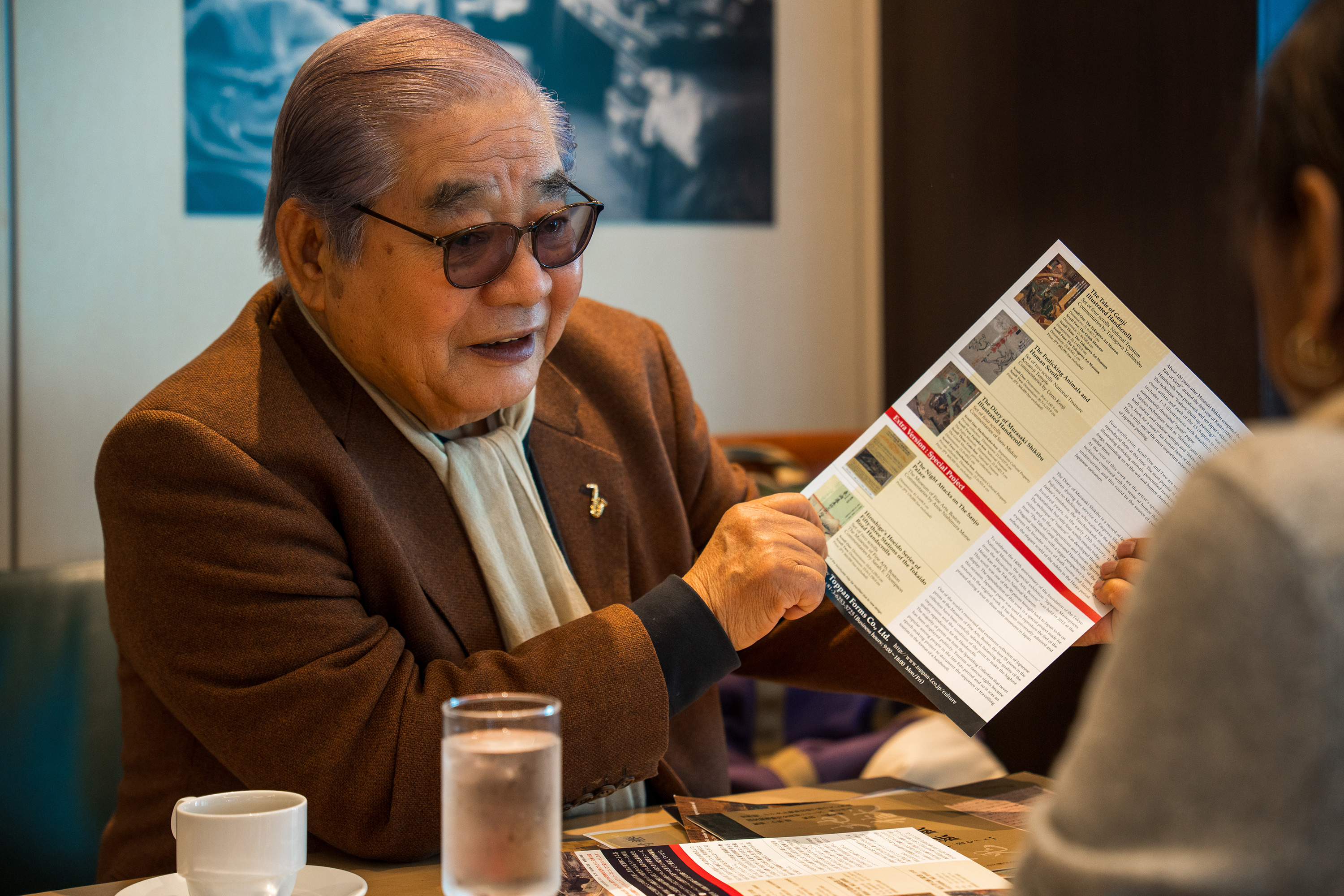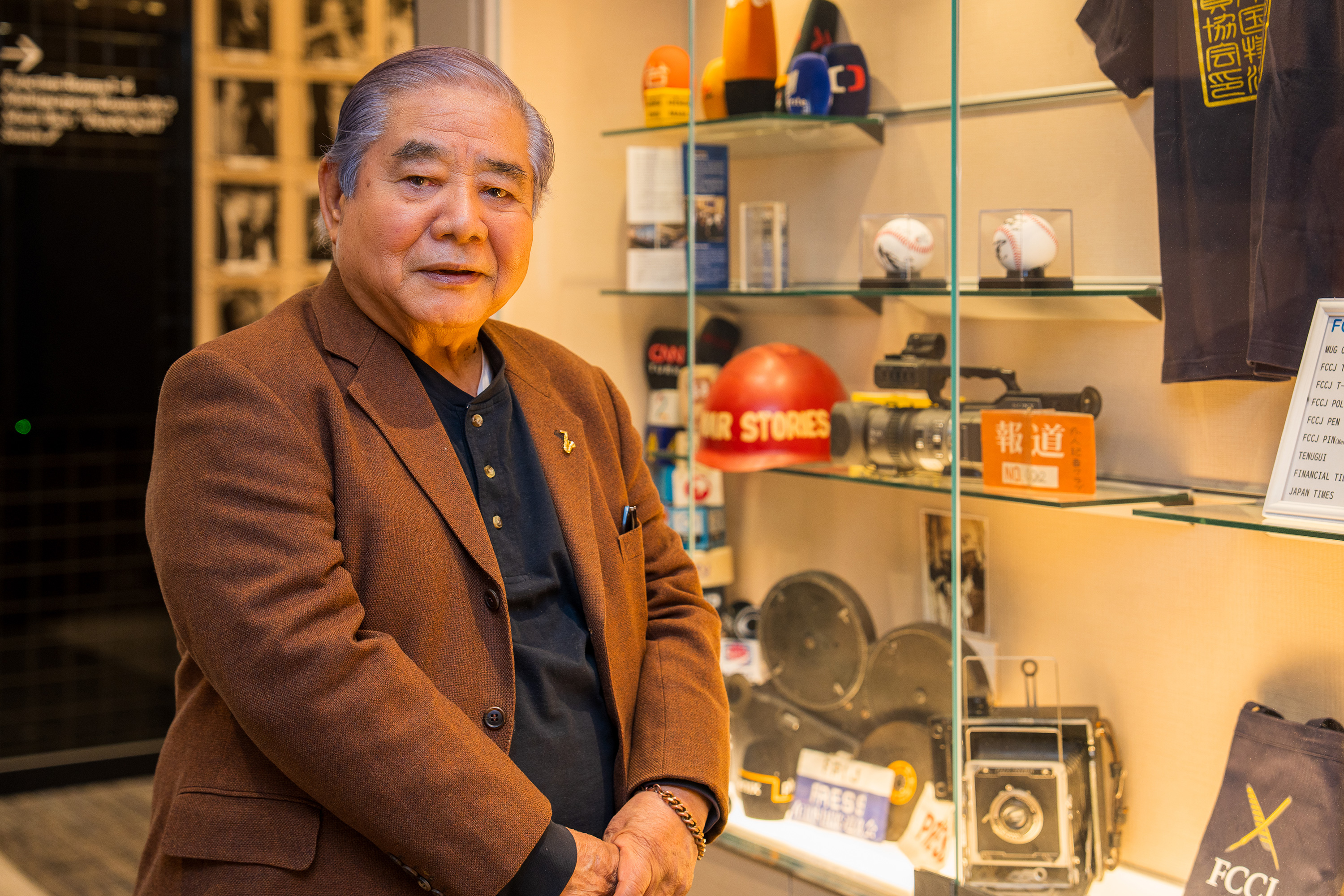Issue:
April 2025 | Ask an Associate
Takeo Hayano’s mission is to bring traditional Japanese arts to life, in print and on the stage

Takeo Hayano describes himself as one of the FCCJ’s oldest associate members. He may also be one of the most modest, batting away my praise for his role in improving the club’s entertainment program over the decades. Hayano has invited traditional Japanese performing artists, giving club members an insight into “hidden” aspects of Japanese culture.
Born in Tokyo in 1940, Hayano graduated in art history from Tokyo University of the Arts and joined the FCCJ in 1965, when it was located in Otemachi and the legendary Associated Press journalist John Roderick was club president. "I loved the dynamic lifestyle of journalists,” Hayano said.
It was a heady time, according to Hayano, who recalled the that the air at the club was usually heavy with cigar smoke and packed with hard-working journalists. “They were always looking around impatiently for a good story,” he said.
Hayano spent about a decade supporting Los Angeles Times correspondents Arthur Dommen and Donald Shannon, helping them with interviews, translation and research. They travelled around Japan chasing the big political and diplomatic stories of the day, but with a constant eye, too, on more offbeat subjects.
He has vivid memories of visiting Japanese-American soldiers who had served in the Philippines and Okinawa, who recounted their experiences fighting against the Japanese. They were enemies at the time, but friends and allies a few years later. Hayano also recalled the time he was asked to look into the death of Nie Er (1912-1935), the composer of Chinese national anthem, who had died, apparently from drowning, in 1935 while swimming at Kugenuma beach in Fujisawa, Kanagawa Prefecture.
“In 1960s, there were no diplomatic relations between Japan and China. We knew so little about what was going in contemporary Communist China, as we referred to it then, so we paid no attention to the Chinese national anthem and its composer,” Hayano said.
“Arthur Dommen already knew that Nie Er had died while swimming in Kugenuma Beach and asked me if there was any record of his death. I found a small monument written by Moruo Kuo (1892-1978) that had just been erected on the beach in 1965. In 2010, the Fujisawa municipal government and the Chinese Embassy in Japan jointly built a newly designed monument with a memorial plaza, where a ceremonial event is held every July.
“These were off-the-path stories or but were pursued by the American correspondents with great diligence. They opened my mind as these themes were not available in the Japanese media in those days.”

Hayano is currently head of e-Art, a company that is involved in consulting, designing and distributing facsimile reproductions of Japan’s famous illustrated handscrolls – a project initiated by Toppan Forms (now TOPPAN Edge) in 2003.
The process is incredibly time-consuming given the delicate nature of the work. A special task force delivers modern versions of scrolls copied with extreme care from the original. The work, Hayano explained, involves a team of digital experts, printing directors, promotional offices, sales forces, and art historians.
“My role is to make sure the product is perfect and for that I rely on my former experience as art director at Toppan Printing (now TOPPAN).”
Hayano says the secret is to pay attention to the minute details, and that means encouraging his team to focus on that single goal. “Besides art lovers, mostly international universities and libraries, our customers are experts on Japanese art,” he said. “The scrolls, some of which are National Treasures, must be as perfect as possible. It takes at least six months to finish one item.”
The best and longest-selling replica produced by Hayano is a set of four handscrolls of 12th century masterpiece The Tale of Genji from a collection at the Tokugawa Art Museum and the Gotoh Art Museum. It is the only existing complete replica still being created. Traditional Japanese art is popular abroad, so Hayano is never short of requests from clients willing to pay several thousand dollars per piece.
Hayano’s love for Japanese art is the driving force behind his company. “Scrolls featuring ancient designs that capture past lifestyles through intricate drawings of landscapes, people, animals, events and flora carried important messages to their audience,” he said. “I believe this role is even more valuable today.
“It is not only the information but the knowledge that accounts. We convey the painstaking craftmanship and the traditional values of the past.”
Among Hayano’s recent replicas are the old scrolls of Hell and Hungry Ghosts, reproduced in 2020 at the height of the Covid pandemic. “The artists (unknown) of those realistic paintings conveyed the brutality of hell,” he says, adding that the works had a connection to the fear of Covid-19 that gripped Japan and the rest of the world at the time. “The depiction of hell on those scrolls suddenly made me understand the pain that surrounded us,” he said. “The devils helped us imagine the suffering visually.”
Hayano’s interest in the preservation of tradition means he is a frequent visitor to Asakusa, where performing arts continue to thrive in the district’s theaters, cinemas and geisha quarters.
Fittingly, last summer Hayano brought Asakusa artists to the FCCJ: Hokan, a professional who entertained the host and guests at drinking parties, as well as Kodan, a style of traditional storytelling, and Katsuben, who provided live narration for silent films. Their numbers are dwindling fast, Hayano said, warning that these treasures of Japanese performing arts are at risk of disappearing “unless we do something drastic now”.
Suvendrini Kakuchi is Tokyo correspondent for University World News in the UK.

